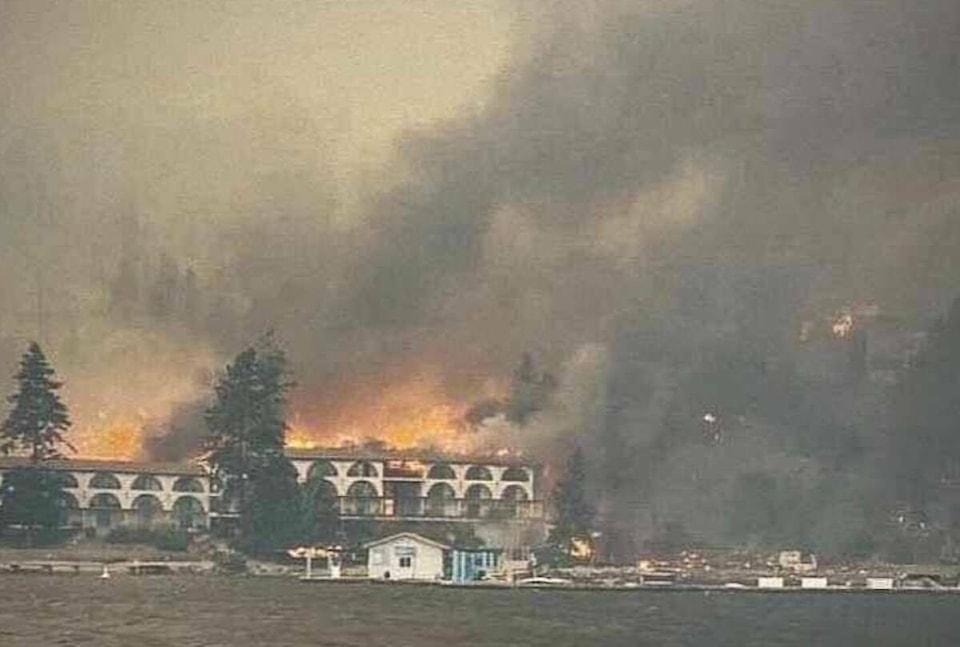British Columbia’s Eby government has vigorously addressed two of the top issues facing the country. It has gone further and faster than any other provincial government to stimulate housing construction, and has most aggressively incentivized primary care providers and addressed other healthcare issues.
In that context, it is disappointing that the B.C. government has been so slow to proactively reduce wildfire risk, particularly given B.C.’s extreme susceptibility to and loss from such fires. Measures to minimize wildfire risks have been identified and urged on governments for two decades or longer.
The benefit of such measures is becoming more apparent as wildfires proliferate. A prescribed burn – a fire set to lessen wildfire risk – was conducted in Aq’am, a first nations community near Cranbrook in April of 2023. Ivan Semeniuk, in the Globe and Mail, recently described the burn along with the St. Mary River wildfire in the same community just a few months later.
“The contrast between the areas burned in the wildfire and those included in the prescribed burn was stark,” Semeniuk wrote. “In the wildfire areas, platoons of blackened trees stood in grim formation. The ground underfoot was black, caked in soil that left a greasy smudge when rubbed between the fingertips. … In the prescribed burn area, pines had scorch marks on their trunks, but were alive. Bunchgrass and bitterbush, a shrub favoured by foraging elk, were pushing up around the tree’s feet.”
The director of fire and emergency services in Cranbrook, Scot Driver, said he was “absolutely convinced” that the prescribed burn prevented the wildfire from spreading to the airport and communities beyond.
Modern fire suppression measures have rendered today’s forests fire-deficient. Yet prescribed burning is minimally utilized in B.C., and is largely applied only in the wildland-urban interface. The Wildfire Service reported conducting 23 prescribed burns in 2023 over a total of 22 square kilometers. Compare that to the total area burned in wildfires in B.C. last year, nearly 30,000 square kilometers, easily a record year.
The budget for wildfire risk reduction, including prescribed burning, is miniscule relative to the amount spent fighting wildfires. The Crownland Wildfire Risk Reduction and the FireSmart Community programs were jointly allocated $230,000 for 2023, but it appears only $40 million of that was allotted to CLWRR. Last fall, the government of B.C. expected wildfire suppression costs to balloon to $1 billion for the year.
The B.C. Forest Practices Board (BCFPB) in a June, 2023 report noted that indirect losses from wildfire – like loss of timber, damage to watersheds and drinking water, and adverse effects on the tourism sector – are 2 to 30 times higher than suppression costs. That means indirect costs can be expected to be as much as $30 billion for 2023. Insurance costs related to the wildfires totaled more than $720 million.
It’s clear the provincial government is seriously underfunding risk reduction measures, and that is burdening the government and residents of B.C. with extensively more wildfire destruction and cost. Prescribed burns need to be expanded rapidly within the wildland-urban interface and beyond.
The BCFPB urges the province to adopt Landscape Fire Management (LFM), and defines it as “a holistic approach to addressing forest fuel buildup and improving landscape resilience.” That includes thinning forests, removing deadfall and using prescribed burns, says the Board. “There is no short-term fix to the current ‘fire-deficit’ condition of our landscape in BC. LFM is ongoing, from generation to generation, with treatments that require maintenance over time, the use of a broad toolkit, and a sustained commitment.” However, BCFPB asserts, “there is an urgent need to act now to reduce the wildfire risk.”
The 2024 wildfire season will soon be upon us. Some forecasts suggest 2024 will be even warmer than 2023, the hottest recorded year globally. Snow loads are low in B.C.’s mountains, and drought continues to be prevalent throughout much of the province. It is possible wildfire losses will be as large as in 2023.
Every area of B.C. is now exposed to extreme weather and wildfires. Invasive fires destroyed 239 homes in Kelowna in 2003, levelled the village of Lytton in 2021 and laid waste to 189 homes in West Kelowna in 2023. In B.C., vast expanses of forests and grasslands, equivalent to more than half of the area of Nova Scotia, were burned in 2023. In Alberta, wildfire consumed a staggering 2400 homes and structures in Fort MacMurray in 2016.
Effective risk reduction is imperative. The wildfire disasters noted, and others, establish that. Moreover, effective risk reduction is attainable. Aq’am establishes that.
“On the left was the prescribed fire side – still green, trees recovering from the prescribed fire, thinner and looking healthy,” Michelle Shortridge, director of operations for Aq’am, told the Globe’s Semeniuk. “And then to my right was the wildfire – black, scorched and ashen, much like our 2017 wildfire site whose ecosystem has yet to recover.”
The B.C. government’s approach to wildfires and wildfire risk must fundamentally change, urgently, before more, expansive wildlands are irretrievably lost.
bruce
Bruce W Uzelman, based in Kelowna, holds interests in economics and political science.
